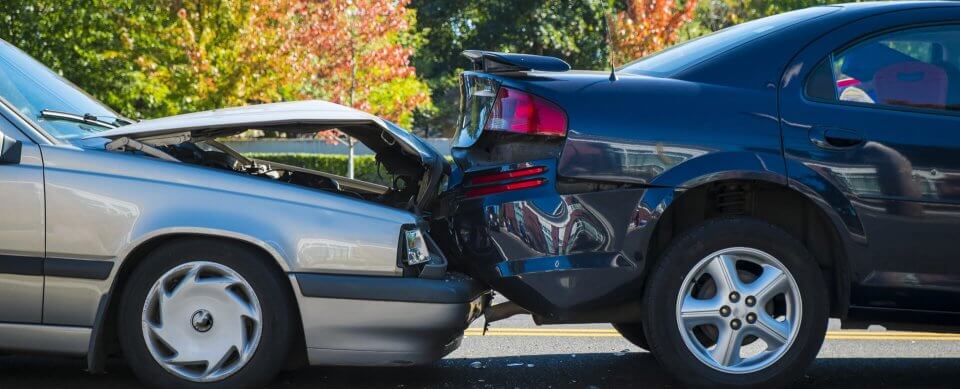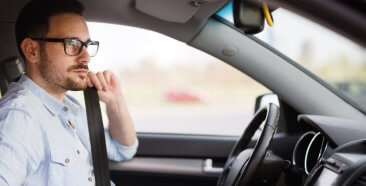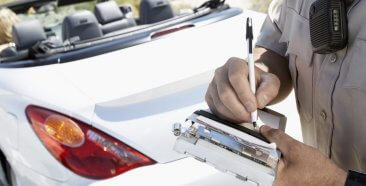
You’ve probably heard the old saying – it’s not the car, it’s the driver.
Well, there’s more truth to the saying than most people give it credit for. And, since, in most cases, the driver, and not his car, is at fault in an accident, truer words were never spoken. Just ask your car insurance company or consult the National Highway Traffic Safety Administration (NHTSA) for statistics and information regarding driver responsibility in accidents.
In fact, there are 5 common types of car accidents and in none of them is the car itself responsible. While you can’t possibly avoid every accident, you can be more aware of how to reduce your risk by following some simple advice for each type of accident.
1. The Rear-Ender
This is a very common accident and occurs when one car collides into the back end of the car in front of it, known as a rear-end collision. You’re at fault – period. You can’t talk your way out of this one. According to the National Highway Transportation Safety Administration, rear-ender crashes make up 29% of all accidents. While following too closely is a common cause of rear-end accidents, 64% of those involved in these accidents were not looking at the road at the time of the crash. This includes talking on their cell phone, text messages, adjusting the radio, extinguishing cigarette smoke and engaging in other distracting activities that can lead to a head-on collision or other types of crashes.
How to avoid – Keep a safe distance from the car in front of you. Maintain a safe speed and pay attention to the road – not your cell phone. Do not text or occupy yourself with any other distraction while driving.
2. The Parked Car
If you hit a parked car, you were either not paying attention, or you need a few parking lessons. Leave a note with your name, phone number and any other pertinent information if the car you hit is unattended.
This is responsible behavior after a collision or any other type of accident, even in a parking lot. It can help resolve the situation and ensure proper communication with the affected party.
How to avoid – When parking your car, avoid parking too close to other motor vehicles. If the spot says “Compact” and you drive a large pickup truck, don’t park there. If you’re parked on the street, don’t crowd the car in front of or behind you. If you had a tough time getting in, they’ll have an equally hard time getting out…and you’re leaving your car vulnerable to damage.
3. The Dreaded Hydroplane
This is usually associated with bad weather when you drive through standing water or a rain-covered highway. Speed is often a culprit in unsafe conditions where the tread of the tire loses contact with the road surface when a thin layer of water gets between the two. It results in a complete loss of control with the tires losing traction. To prevent such accidents, it’s important to adjust your driving behavior and exercise caution when encountering inclement weather conditions.
How to avoid – During wet weather, slow down for the conditions. Regularly check your tires for worn down tread, cutting down on traction and increasing your chances of hydroplaning. If you start hydroplaning, don’t stomp the accelerator or the brakes. Take your foot off the gas and apply easy, but steady pressure to the brakes to help your car slow down enough to regain traction.
4. The Animal Collision
Wild animals don’t have a copy of the DMV manual and behave like, well, wild animals. They’re unpredictable and will make their way across a highway in spite of traffic. And, depending on the size of the animal, such as a deer or moose, colliding with one can not only severely damage your vehicle, but put your safety at great risk.
How to avoid – Pay attention to cautionary animal crossing signs – they’re there for a reason. On dark rural or mountain roads, use your high beams and slow down to a safe speed in case one darts out unexpectedly. Be sure to be considerate of oncoming drivers by dropping to your lower beams until they have passed.
5. The Side Impact
These side-impact or angle collisions occur when one driver fails to stop at a light or stop sign and collides with the vehicle with the right of way. T-bone accidents, which are a type of side-impact collision, are especially dangerous because the sides of the vehicles absorb less energy, leaving the passengers more prone to injury.
How to avoid – Don’t take the fact you have the right of way for granted. Just because you do doesn’t mean there isn’t some distracted guy coming your way, especially at high speed. Maybe he’s had a few too many and fails to see the red light or stop sign at the corner, increasing the risk of T-bone collisions.
Be aware of conditions and make sure you’re not the one blowing through the red light or stop sign. Also, consider looking into buying a car with side airbags. They’re highly effective in reducing head injuries from side-impact collisions, including T-bone accidents.
Prioritizing safety measures and staying vigilant on the road can help mitigate the potential dangers posed by high-speed T-bone collisions.
Other Common Car Accidents
Other common car accidents include collisions with oncoming traffic in the opposite direction, often caused by a negligent driver who veers into the wrong lane. These accidents can have severe consequences, including traumatic brain injuries and even fatalities.
Traffic accidents can also occur in various other ways, such as rollover accidents, single-vehicle crashes, and intersection accidents. Rollover accidents happen when a vehicle flips over onto its roof or side, often due to excessive speed or abrupt maneuvers. Single-vehicle crashes involve a car colliding with an object or veering off the road without involving another vehicle. Intersection accidents occur when two or more vehicles collide at an intersection, typically due to failure to yield or disregard for traffic signals.
Multi-vehicle collisions are another type of accident that can result from reckless driving or poor decision-making by multiple drivers. These accidents often involve multiple vehicles colliding simultaneously or in a chain reaction.
To avoid these types of accidents, it is crucial to drive responsibly, obey traffic laws, and remain attentive behind the wheel. Avoid distracted driving, maintain a safe speed, and exercise caution when approaching intersections or encountering oncoming traffic. Defensive driving techniques can significantly reduce the risk of these common car accidents and help ensure the safety of both yourself and others on the road.
Possible Consequences of a Car Accident
Car accidents can have severe consequences, leading to various serious injuries and even fatalities. Among the potential outcomes are spinal cord injuries, which can cause long-term disability and impairment. Serious car accidents can result in life-altering injuries for the victims involved. The severity of injuries can vary, ranging from minor cuts and bruises to more severe fractures and internal injuries.
In such cases, it is essential for victims to understand their legal rights and seek proper legal advice. Personal injury claims can help victims pursue compensation for their medical treatment, property damage, and other losses. Attorneys specializing in car accident cases can provide valuable assistance in navigating the legal process and advocating for the victims’ rights.
In addition to physical injuries, car accidents can also lead to financial consequences. Medical bills can quickly accumulate, placing a significant burden on the victims and their families. Furthermore, fatal injuries can result in the loss of a loved one, causing emotional distress and financial hardship.
To address these consequences, victims may be entitled to financial compensation. Seeking a legal claim can help them recover damages for medical expenses, lost wages, pain and suffering, and other related costs.
Understanding the statistics and laws regarding car accidents in the United States is crucial when pursuing a claim in order to build a strong case and increase the likelihood of a favorable outcome.
It’s important to prioritize safety on the road, but accidents can still occur. By being aware of the potential consequences and seeking legal assistance when necessary, car accident victims can protect their rights and pursue the compensation they deserve.
Conclusion
While you can’t prevent all accidents, practicing cautious driving and focusing on prevention can help you avoid many. By paying attention to traffic signals and following road safety guidelines, you can reduce the risk of collisions.
Staying informed through resources like the Insurance Information Institute can provide valuable insights. Taking proactive measures not only protects yourself but also contributes to road safety and helps keep your car insurance rates from increasing.
No matter what’s on your driving record, Freeway Insurance can help you get the car insurance you need. Freeway specializes in insuring all drivers. So if you need an SR-22 form, full coverage, or liability, give us a call today at (800) 777-5620 so you can get a free car insurance quote.


